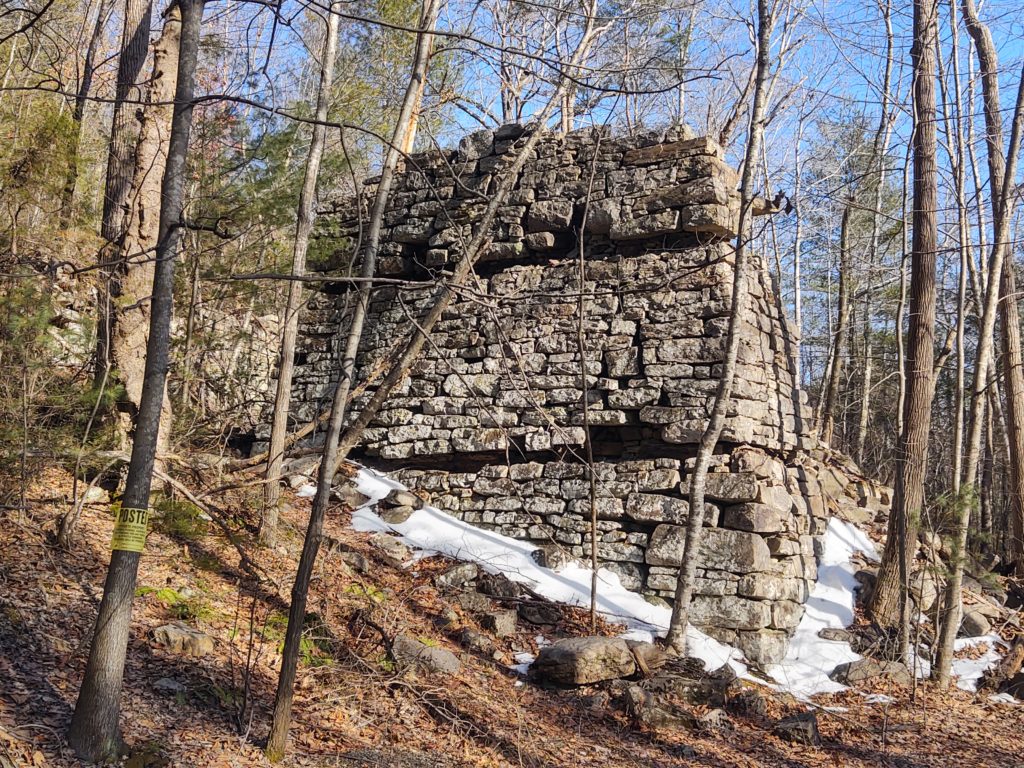A few months ago, I mentioned a great book of local history, Shenandoah Iron by Norman H. Scott that details the incredible industry that once flourished in the Shenandoah Valley. This thriving enterprise has left its mark not only with the now cold and silent stone crucibles throughout our mountains, but in names of communities that sprung up near them.
Scott describes how a town developed around the Columbia Furnace in the 1830s when it added a store, post office, hotel, mills, doctor’s office and school. In 1855, 200 workers enabled the crucible to deliver 850 tons of forge and foundry metal that were shipped by rail throughout the country. By 1860, output had grown to nearly 1400 tons providing quite an economic engine for the surrounding community. In addition, many more were employed as miners or as colliers who cut trees and prepared charcoal throughout the local mountains to heat the ore.
Iron production was a very prosperous enterprise for the Valley until it was crippled by the Civil War. The Columbia Furnace was burned three times by Union forces in attempts to stop it from supplying Tredegar Iron Works in Richmond which manufactured weapons and ammunition for the Confederacy.
One of the untold stories of this era and one of the factors that contributed to the demise of locally produced iron was slave labor. Because iron production is very labor intensive, many furnaces used slaves to keep their fires burning and their molten profits flowing. Because of this cheap labor, Scott observed that many furnace owners failed to adopt labor saving technologies that would have benefited them in the long run.
When the slaves were freed after the war, furnace owners were left with staggering costs and limited means to continue their operations. While some of them closed, others hired freed slaves to maintain output.
Not everyone was happy that former slaves were given opportunities and in January of 1880, chaos erupted over the issue. According to an article from the Woodstock Herald quoted by Scott, five armed men went by the Columbia Furnace and coerced the workers there to halt production.
Adding about 35 to their number, they then continued westward to Liberty Furnace where they fired on the workers. Two black men were wounded and a riot ensued. By the time the article appeared in the newspaper the next day, a group of lawmen from Woodstock had been dispatched to quell the disturbance. Although no resolution is described, I assume that order was restored for both furnaces continued to operate until Columbia closed in 1884 and Liberty many years thereafter.
While we bemoan that such economic powerhouses are no longer active in our area, we are thankful that the institution of slavery that powered them for so long is no more. Sadly, however, just as happened at Liberty Furnace following the Civil War, there are still some leftover prejudices that erupt from time to time and need to be quenched, not by law officers, but by the Spirit and love of God.
A good understanding of human ancestry from the pages of God’s Word helps us to appreciate that we’ve all descended from Adam and Eve and that we are all human beings created by God with various amounts of melanin in our skin. Freedom, education, economic opportunity, respect and other basic rights and dignities should not be given nor withheld based on such literally superficial reasons.
As we remember Black History this month, let us be mindful not only of stories on the national level but of inequities experienced and still experienced in our own area. And let’s invite God to reveal any prejudicial attitudes or biases lingering in our minds, to forgive us of them, and to help us to love and respect each person as our distant cousin.
Blessings, George
